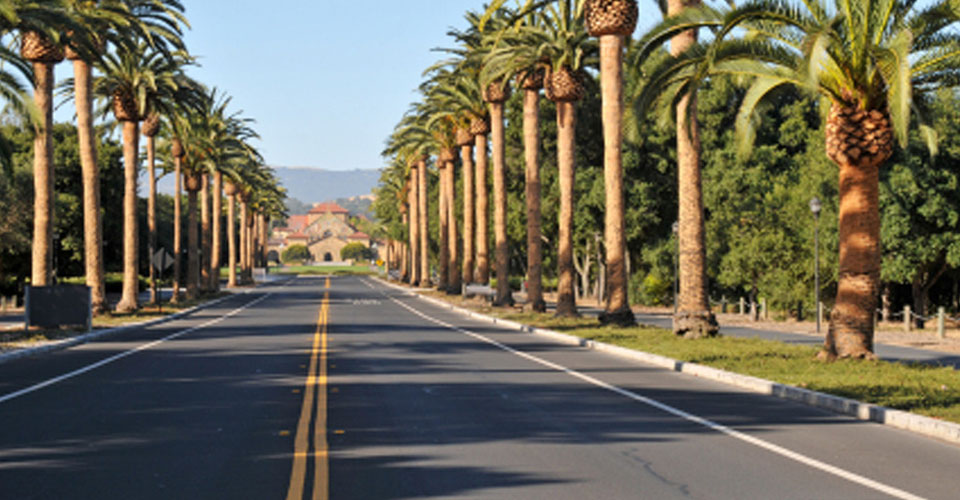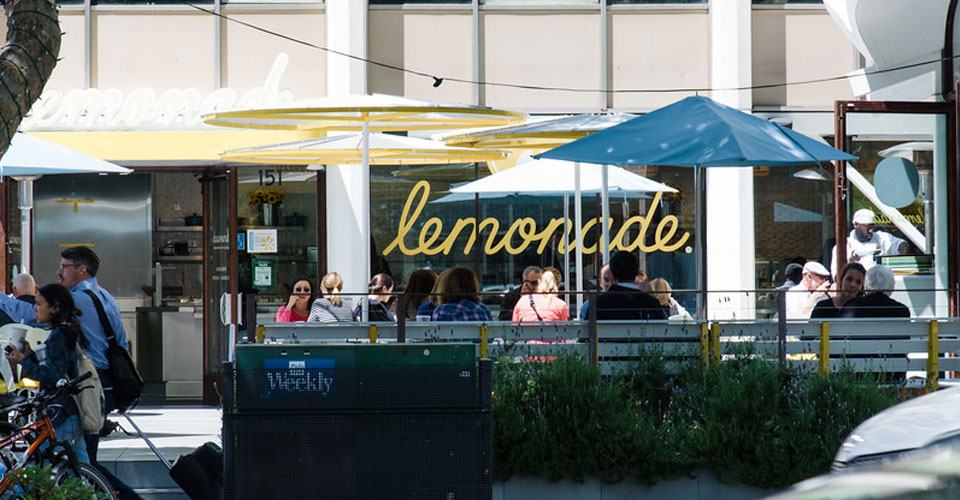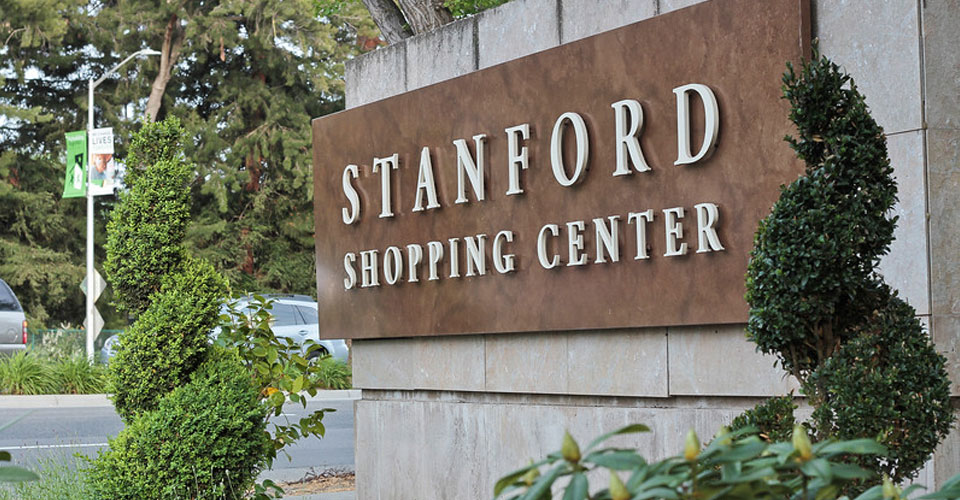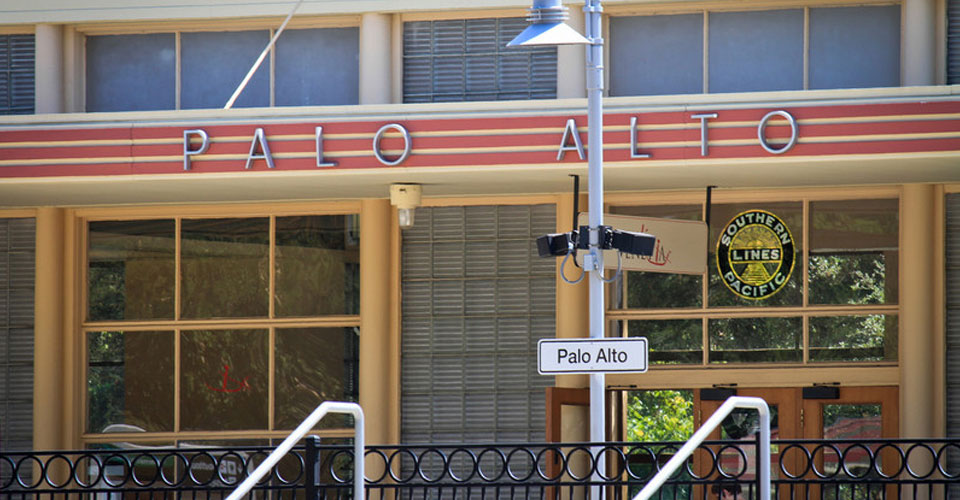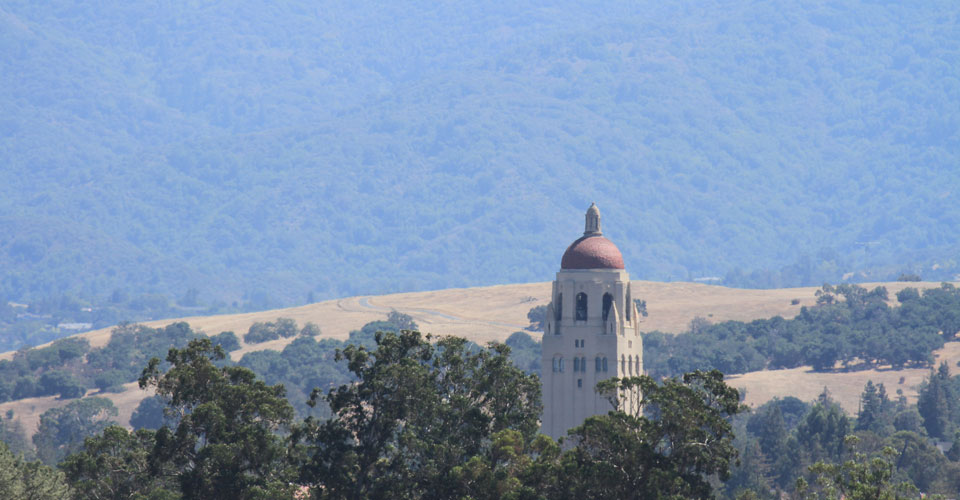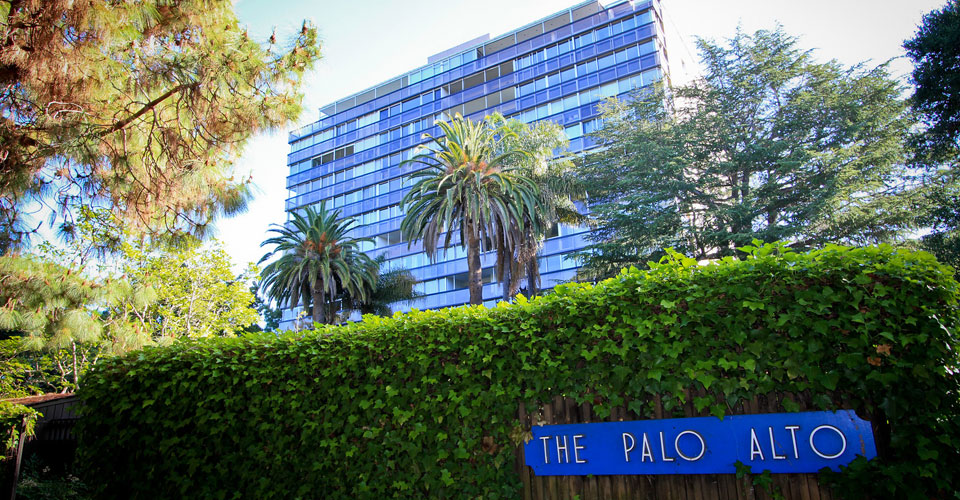
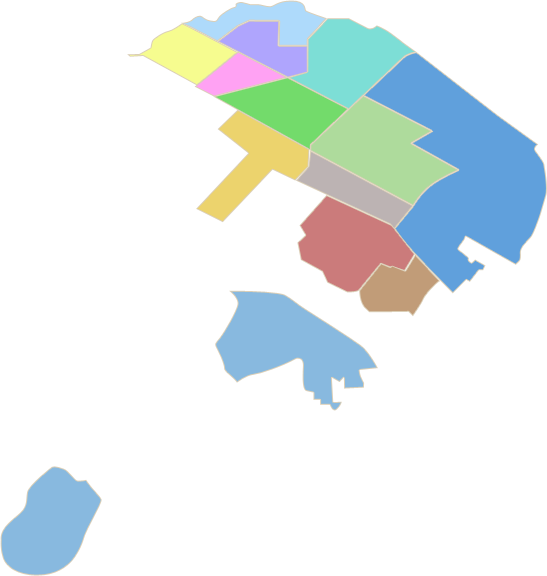

Palo Alto
Hills

Palo Alto
Hills

Green
Acres


South Palo
Alto

Midtown

Ventura

College
Terrace

Old Palo
Alto

Green
Gables

Professor-
ville

Community
Center

Downtown
North

Crescent
Park
Palo Alto Neighborhoods
Palo Alto API Scores 2016*
Elementary Schools
- 3 Addison 950
- 6 Barron Park 873
- 1 Duveneck 968
- 10 El Carmelo 950
- 4 Escondido 924
- 9 Fairmeadow 952
- 12 Herbert Hoover 992
- 7 Juana Briones 942
- 5 Lucille M. Nixon 959
- 11 Ohlone 926
- 8 Palo Verde 963
- 2 Walter Hays 928
Middle Schools
- 14 David Starr Jordan 938
- 13 Jane Lathrop Stanford 936
- 15 Terman Middle 962
High Schools
- 17 Henry M. Gunn 915
- 16 Palo Alto High 903
Palo Alto Median Home Prices & No. of Sales
The median price of single family homes in Palo Alto went up 11.15% in 2017, -4.38% in 2016 and 9.38% in 2015.
PALO ALTO – A SPECIAL PLACE TO LIVE
Would you believe that a community founded as a ‘camp’ in 1769 has bridged time to become a catalytic force that drives contemporary life and ideas? Palo Alto ticks off most all criteria on your checklist for what we seek in the best place to live. For starters, it offers an ideal Mediterranean climate, thriving economy, high-achievement education choices and a 31-mile dark fiber ring around the city that provides ultra high-speed Internet. It can also claim an affinity for innovation, friendly neighbors, tranquil tree-lined streets, exceptional dining and shopping experiences and close proximity to San Francisco – 35 miles away, and San Jose –14 miles away. Palo Alto, at the heart of Silicon Valley, is a community that truly offers it all.
Palo Alto takes great pride in its heritage as a center of both learning and innovation. In addition to a highly acclaimed public school system, the city is home to StanfordUniversity as well as scores of top tier tech, science, research and financial investment concerns. As a result, Palo Alto naturally draws influential people and ideas to itself. Its dynamic enterprise environment works like a magnet drawing talent and jobs to Palo Alto – enabling many residents to both live and work here.
And yet, Palo Alto really isn’t a typical suburban city. Found within its borders is a thriving commercial core anchored byrestaurants/bars plus multiple retail/service business districts. Included in this mix is The Stanford Mall that features Neiman Marcus, Bloomingdale’s, Macy’s, Tiffany’s, Cartier, Louis Vuitton and otherupscale stores.
Moving beyond its reputation as a high-tech city, Palo Altooffers anarray of natural habitats. The prime example is Foothills Park, which providesresidents with access to 1,400 acres of rugged chaparral and woodlands, hiking trails, streams, a lake for fishing and boating, camping grounds, plus wildlife including deer and coyotes.
A community with so much activity faces traffic congestion and parking issues, which Palo Alto leaders are hard at work to minimize, enhance and solve.Solutions involve expanded public transit, improved biking infrastructure, a shuttle, car-share services and other programs. The goal is to make it easier for residents and workers to move to, in and around Palo Alto.
All these amenities, however, come with a hefty price tag. And while it may be a challenge to move here financially, once you do, you’ll find yourself in an exciting community with a very friendly, socially minded and politically engaged citizenry. Yes, tech millionaires and venture capitalists abound, but they too live in what appear to be understated suburban-style homes and regularly engage with their neighbors. And it’s the various neighborhoods of Palo Alto – quirky, quiet, historic, unpretentious and friendly – that make this city a special place to call home.
PALO ALTO – A UNIQUE COLLECTION OF NEIGHBORHOODS
BarronPark
At first glance, the sylvan locale of BarronPark may seem antiquated amidst the flurry of city life. However, residents here find its tranquility to be a welcome contrast to the technological world that surrounds it.
BarronPark’s roots reach back to a small tract of a Spanish Land Grant ranchothat was sold in 1853and named Mayfield Farm. Then mining tycoon Edward Barron acquired the 250-acre farm parcel in 1878. Later Colonel Sebastian Jones, owner and headmaster of the CaliforniaMilitaryAcademy, which occupied the BarronMansion, registered the land as the BarronPark subdivision in 1925. Finally, BarronPark was annexed to Palo Alto in 1975.
The BarronParkneighborhood is known for its eclectic collection of architectural styles, with homes ranging from multi-million dollar properties to modest dwellings in the Buena Vista mobile-home park.While many here are long-time residents,BarronParkalso attracts young professionals looking for a single-family home that provides a relaxed lifestyle in a friendly community. And as a true family environment, BarronPark is proud that children here attend such highly ranked schools asTermanMiddle School and GunnHigh School.
While the convenience of a wide array of businesses and services are close on El Camino Real, locals do love to walk along sidewalk-less streets to CornelisBolPark– home to BarronPark’s donkey mascots, Niner and Perry – treasured icons that reinforce the unique rural ambiance of the neighborhood.
The neighborhood associationBarron Park Association (BPA) is very active, from arranging everything from welcome packets for new residents, to coordinating neighborhood watch programs, to managing BarronPark’s popular annual events – the May Fete celebration, Luna New Year Celebration.The BPA also works to keep residents informed about and engaged in citywide issuesand local environmental concerns.
While Palo Alto has grown and changed over the years, the semi-rural “charm” of the BarronParkneighborhood has stayed constant, making it a great place to be.
BARRON PARK FACTS
LOCATION: roughly between Chimalus Drive and Maybell Avenue, El Camino Real and GunnHigh School fields
NEIGHBORHOOD ASSOCIATION: Barron Park Association – bpapaloalto.org
POST OFFICE: Cambridge, 265 Cambridge Ave.
FIRE STATION: No. 5, 600 Arastradero Road
LIBRARY: College Terrace branch, 2300 Wellesley St.; Mitchell Park branch, 3700 Middlefield Road
PUBLIC SCHOOLS: BarronPark and JuanaBrionesSchools, TermanMiddle School, GunnHigh School
SHOPPING: AlmaPlaza, San Antonio Shopping Center, California Avenue
PARKS: CornelisBolPark; JuanaBrionesPark
College Terrace
As its name suggests, when you arrive in the College Terrace neighborhood of Palo Altoyou know you’re in a college town. You quickly sense you’re in an exclusively residential, pedestrian friendly community at the foot of one of America’s premier centers of learning,StanfordUniversity.In addition to having Stanford as its ‘next door neighbor’, even the streets in the area echo a collegiate attitude bearing the names of such East Coast colleges as Harvard, Columbia, Yale, Oberlin and Bowdoin. Its close adjacency to Stanford means CollegeTerrace is fully engaged with youth and learning.
The neighborhood group, the College Terrace Residents’ Association (CTRA), brings residents together to foster an engaged, higher quality of life. It works hard to represent and look after the best interests of its resident’s interests, interacting on their behalf with boththe city of Palo Alto and Stanford.
College Terrace, one of the oldest neighborhoods in Palo Alto, has a rich history and tradition. Housing in College Terrace is a diverse mix of relatively modest one and two story homes to small apartments, all ranging in age and style as well. For the most part, modest single-story cottages are typical here, but you’ll also come upon beautiful and larger Victorian homes. Most homes are situated on small, tidy lots with either two-car garages or long driveways.
While being one of Palo Alto’s more humble neighborhoods, College Terrace is also a pretty busy area. It has everything from flat, tree-lined streets that shade sidewalks to a downplayed religious fervor. It is an extremely convenient location for students, young families and long-term residents who want to stay connected to the university’s rich culture and campus events. Geographically, College Terrace encompasses about twelve blocks by two blocks, running from Alma Street to Junipero Serra Boulevard.
College Terrace also has a burgeoning and diverse population of about 5,000 residents who are often referred to as “the melting pot of Stanford”. Here you’ll find an exciting mix of young and old, locals and people from far away, owner residents and renters, single-family homes and small apartments – a worldly community with small town ambiance.
Living in College Terrace also comes with some issues and challenges. A major concern has been the affordability of ownership as well as rents in the neighborhood, both of which have climbed up in recent years. The development of large projects in or near College Terrace – Stanford’s 17-acre Mayfield project that will provide housing for Stanford faculty members – has everyone’s attention. And of coursethere is the impact of traffic congestion and parking on area streets – twin issues that College Terrace residents work on with the city of Palo Alto in an effort to introduce andmanage traffic-calming measures.College Terrace, a busy neighborhood marked by diversity and influenced by Stanford’s world-class cultural and learning experiences, is an exceptional place to live.
COLLEGE TERRACE FACTS
LOCATION: Bounded by Stanford Avenue, El Camino Real, California Avenue and Amherst Street
NEIGHBORHOOD ASSOCIATION: College Terrace Residents’ Association – ctra.org
POST OFFICE: Cambridge branch, 265 Cambridge Ave.
FIRE STATION: No. 2, 2675 Hanover St., and No. 6, 711 Serra St. on the Stanford campus
LIBRARY: College Terrace, 2300 Wellesley St.
PUBLIC SCHOOLS: Escondido School, Jordan Middle School, Palo Alto High School
SHOPPING: California Avenue
PARKS: Cameron Park; Mayfield Park; Weisshaar Park; Werry Park
Community Center
Community Center is definitely one of Palo Alto’s most family friendly neighborhoods. In fact, most residents will tell you that they chose Community Center because of all its conveniences for raising children. The neighborhood is easy access within a couple of blocks to swimming pools, the children’s museum, library, theaters, Eleanor Park, and of course, Palo Alto schools. The area is so safe and youth oriented that kids are able to walk to their activities, which saves parents both time and gas money. Residents are also happy to be in Community Center because just about every conceivable public service is within a two-block radius, and a five-minute drive gets you to any level and quality of shopping experience you could need or want.
Situated between Middlefield Road and Embarcadero Road, Palo Alto’s Community Center is a close-knit, suburban community with real communal appeal. It comprises a dense residential terrain with a total population of about 2,200. Its perks also include its reasonable proximity to the many happenings of Stanford University.
Though somewhat understated, Community Center’s residential aesthetics surpass most Palo Alto neighborhoods. As you drive along its roadways, you’ll quickly see it’s a clean and quiet neighborhood with wide, orderly streets and well-landscaped properties. In fact, its lush trees tend to canopy over the streets creating a relatively cool and shady neighborhood. Most homes here are rather old, built between 1930 and 1960. They are also mixed between one and two-stories, with visually pleasing house fronts that present strong curb appeal. Residences usually sit on sizable lots by Palo Alto standards, with tended lawns and manicured shrubbery.
While not unexpected, Community Center sits within a desirable and appreciating real-estate market, mostly due to Palo Alto’s fine public school system. The neighborhood includes Walter Hays and Duveneck Elementary Schools, Jordan Middle School and Palo Alto High School. Community Center also offers the Children’s Theater, Walter Hays Kids’ Club and Art Center, all within the community’s recreation center complex. Finally, Community Center is within walking distance to the coffee shops and retail stores of Downtown Palo Alto.
The rate of families moving into Community Center has been increasing in direct proportion the seemingly never-ending growth of Silicon Valley’s tech industry. As a result, bi-annual block parties coordinated by the Community Center Neighbors’ Association have been going on for the past 40 years to welcome new families to the neighborhood. The Association also host other gatherings and events during the year. The sum total of all these amenities makes Community Center in attractive home ownership option for young families.
COMMUNITY CENTER FACTS
LOCATION: bounded by Middlefield Road, Channing Avenue, Newell Road and Embarcadero Road
NEIGHBORHOOD ASSOCIATION: Community Center Neighbors Association – [email protected]
POST OFFICE: Main, 2085 E. Bayshore Road; Hamilton, 380 Hamilton Ave.
FIRE STATION: No. 3, 799 Embarcadero Road
LIBRARY: Rinconada Library, 1213 Newell Road; Children’s Library, 1276 Harriet St.
PUBLIC SCHOOLS: Addison, Duveneck and Walter Hays Schools, Jordan Middle School, Palo Alto HighSchool
PARK: Rinconada Park
SHOPPING: Midtown, Downtown Palo Alto
Crescent Park
If you’re longing for a small town lifestyle that’s in close proximity to a dynamic urban center you will find it in the Crescent Park neighborhood of Palo Alto. Elegant homes set on broad, verdant lots with wide, tree-lined streets are the hallmarks of Crescent Park. The neighborhood has managed to retain the unique character of mixed architectural styles, including many old-fashioned homes that have been remodeled on the inside while preserving their traditional exteriors. Crescent Park truly is a neighborhood that proudly showcases the charm of older houses.
Residents take advantage of many out-of-door pursuits. You’ll find fitness buffs intermingling with families on the green expanses of nearby parks or out and about on neighborhood streets that accommodate about 1,800 one-of-a-kind designed homes, ranging from bungalows to craftsman to colonials. In particular, neighbors are drawn to the demonstration garden planted on a plot of land adjacent to Eleanor Pardee Park. Created by master gardeners from the UC Extension program, the garden is a quiet oasis with dirt paths that meander through?carefully manicured beds. The gardeners have focused on two distinct areas of interest.One is thewater efficient garden that highlights conservation through use of regional plants that require little water.The other is the edible garden where fruits and vegetables currently in season are featured. Both of these gardens are open to the public.
Crescent Park is bordered by San Francisquito Creek – a natural resource that brings both pleasure and concern since floods have caused property damage in the past. The Crescent Park Neighborhood Association actively works to secure installation of flood-control mechanisms designed to minimize flood impact on the neighborhood. But, even though floods happen, residents truly love the creek area.
While Crescent Park is a tranquil, Rockwellesque neighborhood, its most important benefits for families are the activities for the children who live here and accessibility to top ranked schools. You’ll see kids playing in the street, walking to school and riding their bikes to the Children’s Library. Eleanor Pardee Park is also a magnet for neighborhood children. The 9.6 acres park is the second largest neighborhood park in Palo Alto and includes two children’s playgrounds, a picnic area with barbecues, walking paths and grassy playing expanses. When it’s time for class, Crescent Park is served by great schools nearby – Duveneck Elementary, Jordan Middle and Palo Alto High.
Ask any resident of Crescent Park and they’ll tell you that they value most the neighborhood’s friendliness and sense of community.
CRESCENT PARK FACTS
LOCATION: bounded by San Francisquito Creek, Newell Road, Channing Avenue and Middlefield Road
NEIGHBORHOOD ASSOCIATION: Crescent Park Neighborhood Association, [email protected]
POST OFFICES: Hamilton, 380 Hamilton Ave.; Main, 2085 E. Bayshore Road
FIRE STATION: No. 3, 799 Embarcadero Road
LIBRARY: Rinconada Library, 1213 Newell Road
PUBLIC SCHOOLS: Duveneck Elementary School, Jordan Middle School, Palo Alto High School
SHOPPING (nearby): The Willows Market; University Avenue; Edgewood Plaza Shopping Center
PARKS: Eleanor Pardee Park; Hopkins Creekside Park
Downtown North
Both praised and admired for its diversity and enlightened sense of community, Downtown North is one of Palo Alto’s most preferred residential neighborhoods.
Bounded by Middlefield Road, University Avenue, Alma Street and Palo Alto Avenue, Downtown North is a compacted, pedestrian-friendly community with about 2,500 residents. This quarter mile square primarily residential district is one of Palo Alto’s most urban neighborhoods. It is also one of the most economically diverse and offers a good variety of housing options.
Perhaps one of its strongest residential draws is the appealing aesthetic mix found in Downtown North between quaint bungalows, mid-rise studio apartments and condominiums. If you’re looking to become a homeowner, the Downtown North neighborhood offers one and two-story homes, usually fitted on tight lots with shallow, not too glamorous front yards and old front porches reminding one of more traditional times. There are also a handful of condominiums available. Renters findmany desirable living options to consider ranging from modest duplex buildings to small apartment communities.
While Downtown North affords one a real sense of small town living, its residents contend with the challenges of urban life. Foremost among these contrasting lifestyle situations is the need to balance access to much of what Palo Alto has going for it with the nettlesome traffic issues and lack of street parking thatlocation brings to the neighborhood. Yes, Downtown North is convenient to Stanford University and downtown Palo Alto. It also has a small, vibrant commercial district along University Avenue where neighborhood essentials like a coffee shop, hardware store, banks, a couple neighborhood eateries and drug store provide for casual, quick errand needs and wants. And then there are the commuters who use the Palo Alto’s Caltrain station which anchors the southern end of the neighborhood. The good news is that the neighborhood is united in working with the city of Palo Alto on identifying and implementing solutions to its traffic and parking concerns. Recent traffic-restriction measures in the residential part of Downtown North have created a much quieter and pedestrian-friendly environment.
Johnson Park, a greenbelt resource the city of Palo Alto redeveloped a public open space from a residential housing district, is now at the center of social life. It has become a place where neighbors get to know each other better. Just about any time of day you visit you’ll find the park is full of kids, seniors and families at play or walking their dogs.
DOWNTOWN NORTH FACTS
LOCATION: between San Francisquito Creek and University Avenue, Alma Street and Middlefield Road
NEIGHBORHOOD ASSOCIATION: Downtown North Neighborhood Association (DTNNA) – http://www.dtnna.com
POST OFFICE: Hamilton, 380 Hamilton Ave.
FIRE STATION: No. 1, 301 Alma St.
LIBRARY: Downtown branch, 270 Forest Ave.
PUBLIC SCHOOLS: Addison Elementary School, Jordan Middle School, Palo Alto High School
SHOPPING: University Avenue, Stanford Shopping Center
PARKS: Cogswell Plaza; El Camino Park; El Palo Alto Park; Hopkins Creekside Park; Johnson Park
Green Acres
Take time to drive through the Green Acres neighborhood and you’ll immediately see that the “green” is likely accredited to the lovely, mature trees that line its streets and populate the yards of its residents. In fact, much of Green Acres used to be orchards.
Transitioning from its agrarian past, Green Acres was created in phases and is in reality two neighborhoods in one: Green Acres I south of Arastradero Road was developed first in the 1950s, followed shortly afterwards by Green Acres II north of Arastradero Road. Despite this roadway division neighbors here feel united in this quiet enclave. Residents of Green Acres openly comment on how safe they feel in their cozy and friendly neighborhood. The communal atmosphere of Green Acres is one of the many attractions luring new residents looking to move into the area.
In recent years, due to the growth of Silicon Valley and Palo Alto in particular, Green Acres has become ethnically diverse, welcoming many families of Chinese, Indian and other descent. Beyond the area’s lush environment, families are drawn to the neighborhood because of its highly sought-after school district. Resident are pleased and proud to have Juana Briones Elementary, Terman Middle and Gunn High School available for neighborhood children.
The Green Acres Improvement Association works to bring neighbors together at through events. An annual Christmas fete, Easter egg hunt, plus frequent block and potluck parties play an essential role in building community and a sense of belonging. Ask anyone who lives in Green Acres and they’ll tell you that they love the neighborhood and look forward to welcoming new neighbors.
While Green Acres is a distance away from downtown Palo Alto and activities on the Stanford campus, many here see the separation as a benefit. The neighborhood, though distance from much of the city’s action, is still very convenient. Plus it assures Green Acres a tranquil setting. Its location also gives residents more choices for shopping. Downtown Palo Alto, Stanford Shopping Center or to the San Antonio Center in Mountain View are all within a few minutes easy driving distance.
Green Acres is very much a neighborhood of hard-working, intelligent and interesting peoplewho are committed to their community. Neighbors here are politically active as a group, concerned about the increase in development of the area and leading Palo Alto in the undergrounding of utilities. It served as the pilot district for undergrounding and is the model for other areas. Traffic is increasingly bothersome issue, but Green Acres continues to be very quiet in relation to other neighborhoods in Palo Alto.Residents still feel they can walk and jog comfortably on its streets.
The residential aesthetics of Green Acres consist of a newer trend of homes set against a traditional, mid-century California theme. As a result, a recent influx of many younger families, which has pumped liveliness into an otherwise reserved neighborhood.
GREEN ACRES FACTS
LOCATION: Green Acres I: Arastradero Road to Glenbrook Drive, Los Palos to Pomona avenues; Green Acres II: NEIGHBORHOOD ASSOCIATION: Green Acres I – [email protected]; Green Acres II Betsy Allyn – 650-493-8859
POST OFFICE: Cambridge, 265 Cambridge Ave.
FIRE STATION: No. 5, 600 Arastradero Road
LIBRARY: Mitchell Park Branch, 3700 Middlefield Road
PUBLIC SCHOOLS: Juana Briones Elementary School, Terman Middle School, Gunn High School
SHOPPING: El Camino Real, San Antonio Shopping Center, Downtown Palo Alto, Stanford Shopping Center
PARKS: Juana Briones Park; Terman Park
Green Gables /Duveneck / St. Francis
Green Gables is an aggregation of several sub-area neighborhoods situated both north and south of Embarcadero Road. Also known asDuveneck/St. Francis, the area includes Embarcadero Oaks, Leland Manor, Garland and Triple El. The major appeal of these neighborhoods, featuring quality homes sited along wide tree-lined streets, is their affordability in relation to other areas of Palo Alto.The Green Gables communities are all noted for having friendly neighbors, a tree in nearly every front yard, and entertaining community events that contribute to creating pleasant family livability.
Duveneck/St. Francis is the primary district based on area coverage. Given its adjacency to Crescent Park it’s also no surprise that larger, more luxurious homes are found here. The focal point for the Green Gables communities though is access to great schools from kindergarten through high school. In particular, parents appreciate the opportunity to send their children to Duveneck Elementary School, renowned for its high scholastic excellence and achievements.
Neighbors of Embarcadero Oaks are famous for their Christmas Tree Lane displays during the holiday season.This holiday celebration focused along Fulton Street, a tradition spanning more than 75 years, takes full advantage ofits graceful sycamores and beautifully classic homes. Noted architect Birge Clark designed many of the residences here. The unique central rings and cul-de-sacs streets layout of Leland Manor makes it quite distinct fromother neighborhoods. The result of these roadway configurations is less vehicular traffic and a very peaceful environment.
Garland is a very compact area comprised of a one-block neighborhood that segments off onto four cul-de-sacs. Stately magnolia trees shade the roads and create a graceful visual scene that sets this enclave apart. Homes here are of mid-century design and construction, many of which have undergone interior renovations in recent years.
Single story, mid-century homes designed by Joseph Eichler characterize the Triple El neighborhood. These coveted homes are noted for perfectly blending the indoor-outdoor lifestyle of California. Do take special note of Elsinore Drive in Triple El where rare Chinese Elm trees as old as the neighborhood distinguish the landscape.
The Green Gables communities are very family oriented. You’ll find kids running around and taking advantage of many facilities that are close by – Eleanor Pardee Park, the Palo Alto Junior Museum & Zoo and the Palo Alto Children’s Library to name a few. Getting around is easy too due to low traffic streets that enable residents to walk or bike to everywhere. Residents also enjoy convenient access to Highway 101, making it easy to commute to San Jose, San Mateo and even San Francisco, or to just catch a Stanford sporting event.
Green Gables offers a broad range of home values because of its sub-neighborhoods. Families can more easily find ahome to fit their needs and budgets in a setting that meets their lifestyle goals.
GREEN GABLES / DUVENECK / ST. FRANCIS FACTS
LOCATION: bounded by San Francisquito Creek, Oregon Expressway, Greer, Embarcaderoand Newell Roads
NEIGHBORHOOD ASSOCIATION: Duveneck/St. Francis Neighborhood Association – [email protected]
POST OFFICE: Main, 2085 E. Bayshore Road
FIRE STATION: No. 3, 799 Embarcadero Road
LIBRARY: Rinconada Library, 1213 Newell Road
PUBLIC SCHOOLS: Duveneck Elementary School, Jordan Middle School, Palo Alto High School
SHOPPING: Edgewood Shopping Center; University Avenue
PARKS (nearby): Eleanor Pardee Park; Rinconada Park
Midtown
Quality of residential life is the central mindset of residents living in Midtown. Bounded by Oregon Expressway to Loma Verde Avenue to W Meadow Dr. and Alma Street to Ross Road to Middlefield Road, Midtown is valued for its placid streets and greenbelt parks. It’s no wonder then that its residents are united and determined to preserve the quiet nature of their neighborhood, making Midtown is a place where people stay once they arrive.
Since it’s founding in 1994, the Midtown Residents Association has worked to maintain the communal atmosphere that sets the Midtown – Palo Alto’s largest residential neighborhood – apart. Some 5,000 families live here in a wonderful array of Eichler, craftsman and English Tudor-style homes. While exuding thecloseness of a small town, Midtownis in fact immediately accessibility to all the amenities you would expect of a major urban center plus the benefits derived from its adjacent proximity to world-class Stanford University. Midtown residents especially value being only minutes away from a major freeway, a Caltrain station, as well as great shopping and service business options.
Having a thriving commercial zone close by has been a priority for Midtown residents. Over the years residents here have been successful in transitioning what was a ragged shopping district with shuttered storefronts into a vibrant neighbor-serving commercial zone. During the dot-com boom, the Association lead the effort that prevented computer startups and dot-coms from snapping up leases that would have displaced merchant and service businesses. The result has created a retail and services district where neighbors meet, interact and hold events such as an annual ice cream social every September plus block parties and community meetings.
Midtown is an extremely family-oriented neighborhood. So many families live herethat the kids playing with each other actually works to bring parents together and get to know each other as neighbors. The result is a companionableand safe neighborhood community.Midtown also prides itself as a neighborhood with an intriguing mélange of people whose different backgrounds, occupations and cultures create a delightful community.
The recent climb of new residential construction has become a topic of concern for the neighborhood. Change though can be unsettling and the Midtown Residents Association constantly endeavors to manage the evolutionary process. The Associations efforts have aided residents and guided their acceptance that growth is good and a sign of a healthy neighborhood. As a result, residents of Midtown maintain a sense of community and warmth toward one another.
FACTS
LOCATION: between Oregon Expressway and Loma Verde Avenue to W Meadow Dr., Alma Street, Ross Road and Middlefield Road
NEIGHBORHOOD ASSOCIATION: Midtown Residents Association – midtownresidents.org
POST OFFICE: Cambridge, 265 Cambridge Ave.; Main, 2085 E. Bayshore Road
FIRE STATION: No. 4, 3600 Middlefield Road
LIBRARY: Mitchell Park branch, 3700 Middlefield Road
PUBLIC SCHOOLS: El Carmelo, Fairmeadow, Hoover, Ohlone and Palo Verde Elementary Schools; J. L. Stanford Middle School; Gunn or Palo Alto High Schools
SHOPPING: Midtown Shopping Center; Middlefield Road at Loma Verde Avenue
PARKS: Greer Park; Hoover Park; Seale Park
Old Palo Alto
As the name suggests, Old Palo Alto is quite simply the historic neighborhood in Palo Alto. With homes dating from the 1920’s and 30’s, the early 20th Century residential pattern here accommodates a wide variety of lifestyles from middle to upper class. While the neighborhood is notably associated with the grand homesof a size and detail that appealed to wealthier families of the first half of the last century – still the provinceof more affluent families – the neighborhood does include smaller bungalow style homes that were also part of this era of suburban America.
The larger, stately homes of Old Palo Alto are generally locatedat the center of the community. The area is a quiet enclave with long, wide and orderly streets accentedby canopied trees that shade the sidewalks. Most importantly, Old Palo Altois not subject to much through traffic, with the result creatinga safe environment for young children playing in their front yards. The largely owner-occupied homes of Old Palo Alto feature horseshoe-shaped driveways and double door entryways – often signs that you are in a wealthy neighborhood. Not easily seen from the curb are the large back yards with pools, gardens and guesthouses. These are fine homes with impressive street appeal that attract young professionals and young families with deep pockets.
Early on, a Gamble heir of Proctor and Gamble fame built the first house south of Embarcadero Road. The daughter of that family, Elizabeth Gamble, created a 2.5-acre oasis on the property that featured diverse demonstration and formal gardens. She ultimately willed the estate to Palo Alto, which was has subsequently become the city’s crown jewel. Today,Gamble Garden serves as a community garden and park, complete with educational programs and grand historic buildings. It is the pride of the Old Palo Alto neighborhood.
Another top benefit of the neighborhood is its convenient adjacency to Stanford University with all of its activities and resources. In fact, both Stanford faculty members and Stanford alumni call Old Palo Alto home. And, of course, the neighborhood’s access to several of Palo Alto’s finest schools is icing on the cake. Students here attend Addison orWalter Hays Elementary Schools, Jordan Middle School and Palo Alto High School – which rivals Gunn High School for top academic honors. Also, California Avenue Caltrain skirts the southern end of the neighborhood and provides access to both San Francisco and San Jose.
OLD PALO ALTO FACTS
LOCATION: between Embarcadero Road and Oregon Expressway, Alma Street and Middlefield Road
NEIGHBORHOOD ASSOCIATION: Old Palo Alto Neighborhood Association (OPANA) – [email protected]
POST OFFICE: Cambridge, 265 Cambridge Ave.
FIRE STATION: No. 3, 799 Embarcadero Road
LIBRARY: Rinconada Library, 1213 Newell Road
PUBLIC SCHOOLS: Addison or Walter Hays Elementary Schools, Jordan Middle School, Palo Alto High School
SHOPPING: Town & Country Village; Midtown; California Avenue
PARKS: Bowden Park; Bowling Green Park; Gamble Garden; Kellogg Park
Palo Alto Hills
Looking to escape at the end of a demanding day in Silicon Valley to a secluded and serene home with incredible vistas and lifestyle amenities? You may find just that kind of retreat for yourself in the Palo Alto Hills neighborhood. This is definitely acreage, pool and tennis court territory. Most of the large homes here have either one or the other, and in many cases both. Should you want even more activity than practicing your serve or taking laps in your pool you can also head over to the Palo Alto Hills Golf and Country Club for a round of golf. In terms of privacy, relaxation and recreation, the Palo Alto Hills neighborhood definitely offers it all, though it comes with a hefty price tag. Palo Alto Hills is one of the city’s most expensive areas.
Most of the 70+ homes in Palo Alto Hills were built in the 1960s on 1-acre or larger lots. Since then, many properties here have been remodeled, updated or rebuilt. While the lots in Palo Alto Hills are much larger than the typical Palo Alto neighborhoods, its still a friendly, connected community. Though the homes are private, neighbors simply have to cross the street to get together, frequently sharing the bounty of their backyards with each other. Residents claim that it’s not uncommon to have a neighbor knock on their door to drop of a basket of fresh fruits or produce, homemade wine, or even a special item just out of the oven.
Neighbors in Palo Alto Hills come to understand that they share their land with animals. Deer, jackrabbits and quail are regular visitors around homes. A few residents have even reported that migrating ducks stop at their swimming pools en route south. However, homeowners are always careful and alert because more aggressive wild animals like mountain lions, rattlesnakes, coyotes and bobcats are frequently spotted roaming about.
The Palo Alto Hills Neighborhood Association works to represent community interests with the city and other Palo Alto neighborhoods. It sponsors programs that often feature guest speakers from the fire department or someone from the community. And, of course, the highlight of the Association’s events calendar is the annual holiday party held at the Palo Alto Hills Golf & Country Club. While many are, residents do not have to be a Club member to come to the neighborhood events. Families here find that their social life also revolves around their children’s schools – Nixon Elementary and Terman Middle and Gunn High Schools.
Palo Alto Hills affords residents a more rural country lifestyle, which means there’s no corner store. When you run short of something you’ll have to drive down to the market in nearby Portola Valley. So, while the neighborhood is relatively removed from everything, it’s also the primary reason people live here.
PALO ALTO HILLS FACTS
LOCATION: off Page Mill Road: Alexis Drive, Country Club Court, Bandera Drive and Laurel Glen Drive
NEIGHBORHOOD ASSOCIATION: Palo Alto Hills Neighborhood Association – [email protected]
POST OFFICE: Cambridge, 265 Cambridge Ave.
FIRE STATION: No. 8, Foothills Park, 3300 Page Mill Road (during summer); No. 5, 600 Arastradero Road
LIBRARY: Mitchell Park branch, 3700 Middlefield Road
PUBLIC SCHOOLS: Nixon Elementary School, Terman Middle School, Gunn High School
SHOPPING: Downtown Los Altos, Portola Valley, California Avenue
PARK: Foothills Park
Professorville
Professorville today is generally ranked as one of the best neighborhoods in Palo Alto. As the name clearly indicates, early Stanford University professors who preferred to own their own land originally settled the area. At that time, Stanford provided on-campus housing for professors but did not allow them to own the land. As Stanford increased in size and prestige, more and more incoming professors constructed new homesProfessorville. The result was a close-knit, densely populated community of academics who built with traditional architectural tastes. Fast forward over a hundred years and you’ll find that the district is now a flourishing Palo Alto neighborhood dominated by the same traditionalist attitude it was founded on, but with a broad variety of new homeowners.
Geographically, Professorville is very small, spanning only about ten square blocks with a total population that barely tops 600. Officially designated as an historic district, the neighborhood is known for its beautiful foliage and 100-plus-year-old homes of Dutch Colonial, Colonial Revival, Craftsman and other classic styles. Professorville is a flat streets neighborhood that provides a spectrum of middle to upper middle-class housing opportunities. The area is mostly made up of one and two-stories homes that were built around the 1930’s. These structures that are generally larger than most Palo Alto communities, featuring comfortable porches and sizable front lawns with neatly trimmed hedges.
Residency in Professorville, a very pedestrian-friendly community,comes with a lot of amenities. For one, close proximity to downtown Palo Alto and Stanford University go to make a home here prime real estate. Of the latter, residents feel closely connected to Stanford’s rich culture and weekly on-campus activities and sports events. The neighborhood is also just an easy walk or bike ride away from downtown Palo Alto, the Town & Country Village, and the Palo Alto Caltrain station, a commuting option that easily connects residents to San Francisco and San Jose. The neighborhood also enjoysconvenient access to a broad array of nearby restaurant, retail, and entertainment options.
Families with young children are increasingly attracted to Professorville due to its central location amid everything Palo Alto has to offer. For children, the highly ranked Palo Alto Unified School District always achieves exceptional API scores across the board. Students in the area usually attend Addison Elementary, Jordan Middle School and Palo Alto High School.Most kids walk or bike to school on their own.
The primary hitch to this peaceful neighborhood is perhaps the consequences of limited street parking during the day, thanks to commuters who leave their cars on its tree-lined streets and then head downtown or to Stanford University.
Of course, owning a home in Palo Alto’s most desirable neighborhood, which in turn is among Silicon Valley’s hottest real estate markets,is costly. Those fortunate to live in Professorvilletend to feel the world is a tranquil,managed realm where ideas can be discussed among friends over coffee or a glass of wine in a lovely setting.
PROFESSORVILLEFACTS
LOCATION: bounded by Kingsley and Addison avenues from Cowper to Ramona streets
POST OFFICE: Hamilton, 380 Hamilton Ave.
FIRE STATION: No. 1, 301 Alma St., and No. 3, 799 Embarcadero Road
LIBRARY: Downtown branch, 270 Forest Ave.
PUBLIC SCHOOLS: Addison Elementary School, Jordan Middle School, Palo Alto High School
SHOPPING: University Avenue; Town & Country Village
PARKS: Scott Street Mini Park; Heritage Park
South Palo Alto
South Palo Alto is a safe, family-friendly and unmistakably middle/upper-middle class community. Wide streets presenting neat, modest homes and numerous parks are the area’s most notable aspects. Most residences here are the outgrowth of residential development following World War II. While the geographic territory of South Palo Alto is actually an amalgam of several smaller neighborhoods, they were all originally part of Midtown. Collectively, South Palo Alto comprises Palo Verde, Adobe Meadow/Meadow Park, Charleston Gardens, The Greenhouse, Greendell, Greenmeadow, Walnut Grove, Fairmeadow, Charleston Meadow, Monroe Park, and the eastern portion of what used to be Midtown.
Bounded by Middlefield Road, Loma Verde Avenue, Alma Street and East Meadow Drive, South Palo Alto is peaceful and pedestrian-friendly. The neighborhood is conveniently situated only minutes away from the Midtown shopping district and various other Midtown conveniences and amenities. Streets here are flat and usually lined with trees, while the charming residences sit on appealing, well-maintained lots. This is mid-century territory highlighted by single-story vintage Joseph Eichler – post-World War II era – homes. An “Eichler” has several distinctive features: modern, one-story, flat or shallow peaked-roofed and wood with large expanses of plate glass. These homes are built to emphasize casual indoor-outdoor living and are often described as quintessentially “California Modern”.
Over the years many of the smaller homes that distinguish the neighborhood have been torn down and replaced with larger, two-story starter homes that better suit the needs of today’s young families. The result of this type of construction activity has residents concerned over the neighborhood’s historical preservation and loss of original character. Be aware that Eichler homes can be difficult to remodel/update and Palo Alto’s planning department strictly enforces the floor area ratio – maximum floor area to lot size.
Ask residents what they like best about South Palo Alto and they’ll tell you it’s a great, convenient location for busy families. Plus it has an old-fashioned feel to it. Residents often bike to work, greeting neighbors on a stroll or walking their dogs along their way. Friendliness is another hallmark of the neighborhood, attested to by frequent block parties that connect an eclectic group of residents. You’ll find people here in all of life’s stages – young, teens, just retired, seniors, families and singles. They’re also from all walks of life – artists, musicians, entrepreneurs, professionals and tech industry gurus. Neighbors come together on holidays, like Halloween, Thanksgiving and end of year festivities. Take time to cruise the neighborhood streets during this time and you’ll see that the lawns of South Palo Alto have been turned into graveyards, houses become haunted, pumpkins are everywhere and, of course, there’s the winter-themed and lighted wonderland.
Parents are pleased to send their children to local public schools managed under the umbrella of the acclaimed Palo Alto Unified School District. Students here attend El Carmelo or Fairmeadow Elementary Schools, J.L. Stanford Middle School and Gunn High School. With their records of achievement, these schools often feed their students into the UC school system or even the prestigious – and just-up-the-road – Stanford University. There’s also a childcare facility anchoring the southern end of the neighborhood.
There’s little doubt, South Palo Alto is an historic, convenient-to-all, Eichler-haven neighborhood with great schools and friendly neighbors.
SOUTH PALO ALTO FACTS
LOCATION: bounded by Loma Verde Avenue, East Meadow Drive, Middlefield Road and Alma Street
NEIGHBORHOOD ASSOCIATION: part of Midtown Residents Association –midtownresidents.org
POST OFFICE: Cambridge, 265 Cambridge Ave.
FIRE STATION: No. 4, 3600 Middlefield Road
LIBRARY: Mitchell Park branch, 3700 Middlefield Road
PUBLIC SCHOOLS: El Carmelo &Fairmeadow Elementary Schools, J.L. Stanford Middle School, Gunn High School
SHOPPING: Midtown Shopping Center, Middlefield Road and Colorado Avenue; Charleston Center; Alma Plaza
PARKS: Mitchell Park; Hoover Park
Ventura
Ventura – the people’s neighborhood – is traditionally Palo Alto’s most affordable area. Here you’ll find a diverse mix of homeowners and apartment dwellers. Palo Alto’s historic African American community calls Ventura home, as do members of Palo Alto’s thriving trades and artist colonies. Today, Ventura is experiencing an influx of new families and new pressures from continuing development of the California Avenue Business District, all as a result of the changing demographics of Palo Alto.
This is a truly eclectic community, and not just ethnically. Ventura is unlike any other area in Palo Alto with kids riding along the bike path, houses of individual styles and families of varying cultures on every street. Residents of Ventura feel this is a real world community focused on family and daily life in contrast to wealthier areas of Palo Alto where business development and jobs are the focal point.
Situated between Oregon Expressway, Alma Street, West Meadow Drive and El Camino Real, Ventura is a convenient walking distance to the California Avenue business district, the Caltrain station and Palo Alto’s/Santa Clara County’s public transit services. For movie buffs, the Palo Alto Square movie complex is nearby on El Camino. Another benefit to living in Ventura is its adjacency to the new bike boulevard, a bike-commuting route running along Park Boulevard.
Architecture in Ventura ranges from 1930’s Spanish and English Revival homes to simple cottages. Recent new construction and renovations contribute to anintriguingblending of vintage versus newly designed homes. Residents chose to move to Ventura not only because of affordability, but because the neighborhood is diverse ethnically, as well as socio-economically. Here’s quite a mixture of people getting along, partying together, raising kids together
Ventura is a neighborhood where neighbors actually interact with each other – an annual highlight for residents is the community block party. Many here are long term residents, too, moving in with young families and now staying on into empty-nester years. While neighbors do come and go, there is a devoted core of people who are happy where they are after raising their family in Ventura. Nevertheless, a new concern among long-term residents is that Venture is a focal point for “house flippers” who are buyinghomes only to renovate and resell them. Of course, this also means that new families may be in a better position to find a home that really fits their needs.
VENTURA FACTS
LOCATION: bounded by Oregon Expressway, Alma Street, West Meadow Drive and El Camino Real
NEIGHBORHOOD ASSOCIATION: venturapaloalto.org
POST OFFICE: Cambridge, 265 Cambridge Ave.
FIRE STATION: No. 5, 600 Arastradero Road
LIBRARY: Mitchell Park branch, 3700 Middlefield Road
PUBLIC SCHOOLS: Barron Park Elementary School, Terman Middle School, Gunn and Palo Alto High Schools
SHOPPING: California Avenue; Charleston Center; El Camino Real
PARKS: Boulware Park; Ventura Community Center
This content is currently unavailable. Please check back later or contact the site's support team for more information.

